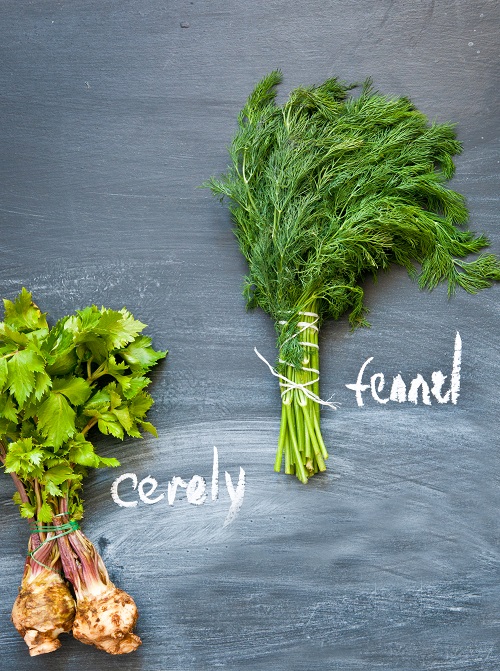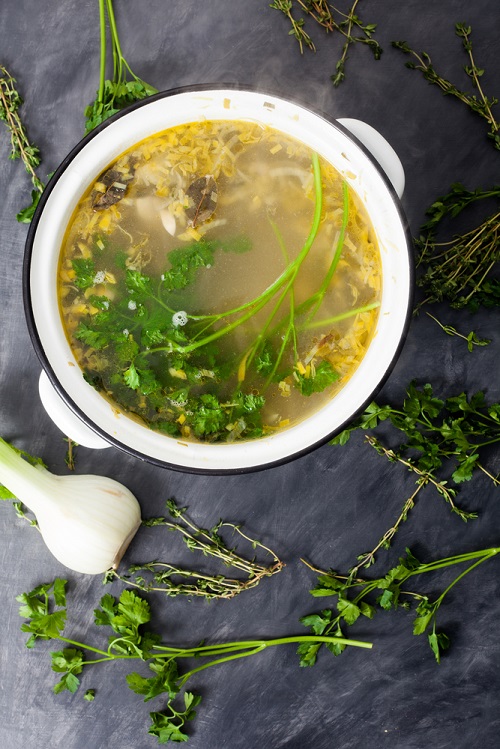Fennel vs Celery – Let’s have an in depth look on the differences of both and end this discussion once and for all!
Are you torn between the aromatic allure of fennel and the crisp crunch of celery? You’re not alone! These two versatile vegetables may seem worlds apart at first glance, but they share an array of similarities that can elevate your culinary creations and even impact your gardening choices. Dive in to unravel the fascinating parallels between Fennel vs Celery!
Celery Root vs Jicama: All the Differences!
What is a Fennel?
Fennel, native to the Mediterranean region, is a versatile plant known for its distinct appearance. It features a bulbous, white, or pale green base resembling celery or onion, with long, slender stalks and feathery, fern-like fronds at the top.
Fennel is a nutrient-rich vegetable, notably high in dietary fiber, vitamin C, potassium, and folate. Its mild, licorice-like flavor makes it a valuable ingredient in a variety of culinary dishes, and its nutritional benefits contribute to its popularity in healthy cooking.
Growing Fennel in Container | How To Grow Fennel in a Pot
What is a Celery?
Celery, believed to originate from the Mediterranean, is a crisp and refreshing vegetable with long, pale green stalks and dark green, leafy foliage. It’s a low-calorie option packed with dietary fiber, vitamin K, vitamin C, and potassium.
Celery is versatile in cooking, commonly used in salads, soups, and as a healthy snack due to its mild, crunchy texture and nutritional benefits.
Growing Celery in Containers | Pot-Grown Celery
Fennel vs Celery – Differences
Fennel and celery are two distinct vegetables that are often found side by side in both gardens and kitchens. Though they share some similarities, they are quite different in many aspects ranging from flavor profile to culinary applications and even growing conditions. Here’s a comprehensive look at how these two vegetables differ.
Flavor Profile
- Fennel: Has a sweet, licorice-like taste, particularly in its bulb.
- Celery: Offers a mildly peppery, earthy flavor.
Culinary Uses
- Fennel: Common in Mediterranean and Italian cooking.
- Celery: More prevalent in American and European cuisines, primarily as aromatic in soups, stews, and salads.
Edible Parts
- Fennel: Bulb, stalks, fronds (leaves), and seeds are all edible.
- Celery: Primarily the stalks and leaves are consumed, although celeriac, a related variety, offers an edible root.
Muskmelon vs Cantaloupe | Difference Between MuskMelon and Cantaloupe
Nutritional Benefits
- Fennel: Rich in vitamin C, potassium, and manganese. Also, provides antioxidants like quercetin.
- Celery: High in vitamin K, also contains a good amount of fiber and water.
Appearance
- Fennel: Features a bulbous base with stalks resembling celery but has feathery fronds.
- Celery: Has long, fibrous stalks with leaves at the top, lacking a bulbous base.
Growing Conditions
- Fennel: Prefers dry soil and can tolerate drought conditions to some extent.
- Celery: Requires consistently moist soil and is less tolerant of drought.
Harvesting Time
- Fennel: Typically gets ready to harvest in late summer and early fall.
- Celery: Gets ready when stalks are firm and crisp, usually late summer through fall, depending on planting time.
Cultural Significance
- Fennel: More common in Mediterranean, Middle Eastern, and Indian cuisines.
- Celery: Predominantly found in Western cuisines, particularly in soups, stews, and Thanksgiving dishes.
Medicinal Uses
- Fennel: Good for digestive problems, including heartburn, bloating, and loss of appetite.
- Celery: Popular for its high fiber content, which aids in digestion, and its anti-inflammatory properties.
Fennel vs Celery – Similarities
Culinary Uses
- Salads and Slaws: Both are commonly used in raw salads and slaws.
- Soups and Stews: They serve as excellent aromatic vegetables in soups, stews, and broths.
- Braising: Both fennel and celery can be braised and served as side dishes.
Nutritional Benefits
- Low Calorie: Both are low in calories and high in water content, making them good options for weight management.
- Rich in Fiber: They provide dietary fiber, beneficial for digestion.
Growing Conditions
- Soil Requirements: Both prefer well-draining, fertile soils for optimal growth.
- Climate: They are relatively hardy and can grow in similar temperate climates.
Zucchini vs. Cucumber:
Structural Components
- Stalks and Bulbs: Both vegetables have stalks that are edible. In the case of fennel, the bulb is also a widely used part.
- Leaves: The leaves or fronds of both plants are edible and are often used for garnishing.
Medicinal Uses
- Digestive Aid: Both fennel and celery have been traditionally used to aid in digestion.
- Anti-inflammatory Properties: They contain various antioxidants and phytonutrients with anti-inflammatory benefits.





